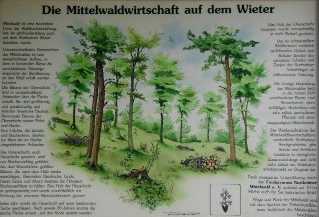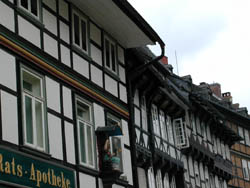For the rural population forests had always been necessary to meet their basic needs. Timber for house construction, fuelwood, game, medical plants and, very important: food and litter for their pigs, goats, horses and cows. Until the 19th century these pasture needs and also the need for good construction timber led to a preference of oak instead of the naturally dominating beech. In the last two centuries then widely degraded forest land was reforested with spruce and pine for several reasons:
- The seeds of this species are easier to store than acorns and beechnuts.
- Afforestations with softwoods (therefore) are much cheaper than with hardwoods.
- One bare grounds and exploited soils this softwood species grow much better.
- Softwood timber better meets the needs of industrializing economy.
Due to the historical development today 46% of the forest area in Germany are still privately owned, mainly by farmers and their families. The average size of their parcels is only 5 hectares. Nearly no forest is owned by the industry. |

A historical form of forest use: coppice with standards. The big trees (preferably oaks) produced acorns and a strong and durable timber for the widespread framewood houses. Those were heated with fuelwood from the coppice.

|
